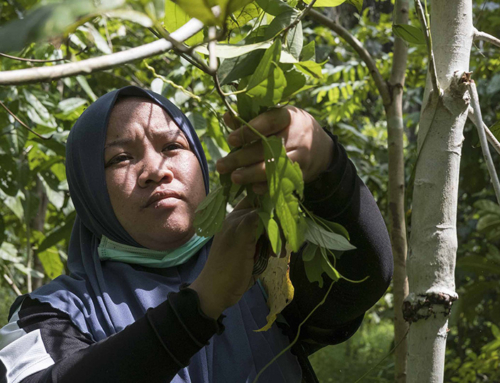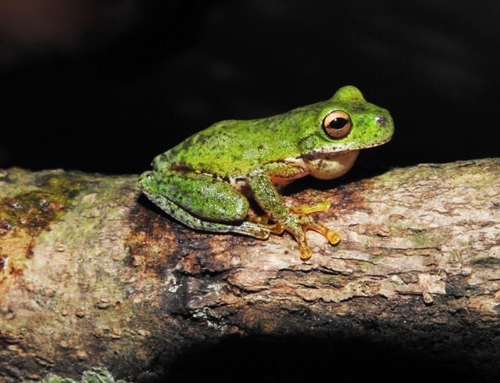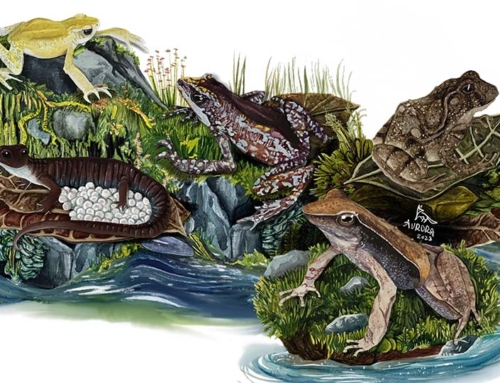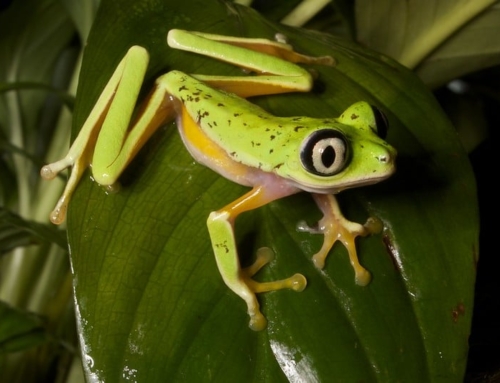Many conservation efforts are concentrated on the iconic threatened species: tigers, pandas and polar bears. Their familiar, fluffy faces draw our eyes, melt our hearts and open our purse strings.
However, sometimes a happy accident can lead to a rediscovery of a forgotten species. But, what then? How can we put a neglected frog on the global conservation agenda?
The Allipacca Water Frog was discovered in mossy streams high in the hills of south-west Peru. It was a new species from the Telmatobius genus with wide grey eyes, a mottled back and golden spots. Four specimens were collected and preserved for the species’ description, and then left to collect dust on a museum shelf for more than sixty years.
As with many uncharismatic species discoveries, it was not just the preserved specimens who were forgotten. The fate of the wild populations of this wide-eyed frog also slipped from scientific notice, and so when the IUCN Red List of Threatened Species (a comprehensive global list of species’ conservation status) was founded in 1965, it was labelled merely ‘Data Deficient’.
Found in ‘frog juice’
In fact, the populations of Allipacca Water Frog were falling, and no one was paying attention. As agriculture and livestock farms crept further into the hills, their clean rivers ran cloudy with chemical and organic waste. The deadly amphibian disease chytridiomycosis crept into the population, and many were caught to make ‘frog juice’- a concoction as disgusting as it sounds, sold for alleged medicinal properties.
However, it was a seller of frog juice who accidentally brought the plight of the Allipacca Water Frog back to conservation attention. Researchers visiting the Sondondo Valley in Peru to survey the world’s largest flying bird, the Andean Condor, stopped in a town market and met a juice seller who showed them the frogs he used.
“We realized that the frogs were individuals of Telmatobius, unlike other species we were familiar with,” said Victor Jassmani Vargas. “The seller gave us tips concerning the likely source of these frogs, namely the small creeks of Allipacca near Puquio where children captured the frogs used for his market stand.
“Armed with this information, we hiked to Allipacca and explored a couple of creeks, and quickly discovered tadpoles and frogs of the same Telmatobius species we had seen at the market stand. After comparing these specimens with a description in the literature, and the type specimens preserved at the natural history museum in Lima, we were able to identify this species as the Allipacca Water Frog (Telmatobius intermedius).”
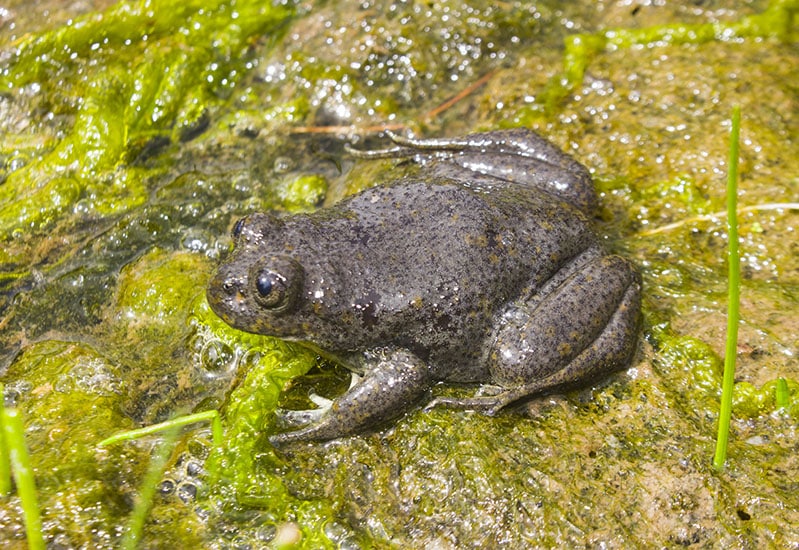
The mottled back of the Allipacca Water Frog has dark spots and patches of gold that vary amongst individuals. Image © Victor Vargas
The Endangered spotlight
Knowing that Telmatobius species are particularly vulnerable to chytridiomycosis, and that their disappearance was probably due to a very small range, Victor and his team were concerned about the frog’s future. But as very little was known about the species, it was impossible to direct meaningful conservation efforts.
This is where Synchronicity Earth’s partner, the Amphibian Survival Alliance (ASA), stepped in. They funded Victor’s team to return to the area and begin a thorough study into the status of the Allipacca Water Frog: identifying the main threats, mapping their range, testing for river pollution and the prevalence of chytridiomycosis.
Thanks to this research, the Allipacca Water Frog has finally been classified in the IUCN Red List as Endangered. Although this may not seem like a good thing, it is a huge step for the conservation of this rediscovered species.
The Endangered status acts as a spotlight for conservation attention, drawing funders and conservation organisations to take action. With ASA’s funded research, the priorities for the frog’s conservation are now clear; it was only found in two rivers within a very limited area (about 10km²), both of which were polluted by agrochemicals. They are also suffering from over-harvesting for uses such as medicinal frog juice. Now these threats have been identified, this research will inform conservation and development decisions in the area.
150 species of amphibians in Peru are categorised as Data Deficient, with no knowledge about whether their wild populations are healthy or in serious decline. Many discoveries happen due to efforts for well-known species under high priority, like the Andean Condor survey here, or the tiger survey which unwittingly captured a rare image of the White-bellied Heron.
Help put more forgotten amphibians on the map by supporting our Amphibian Programme.


